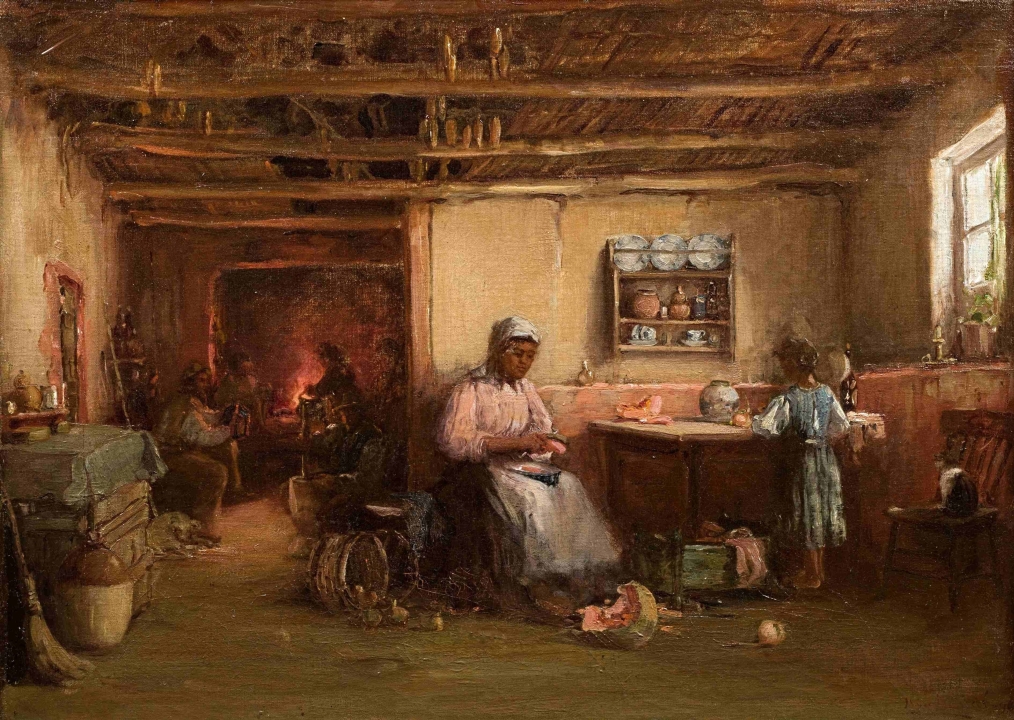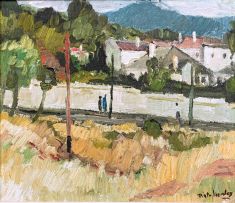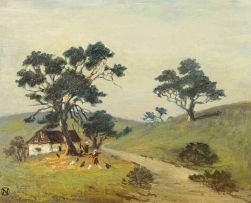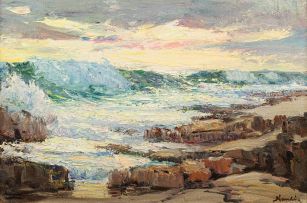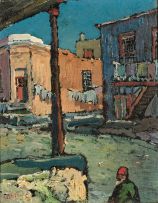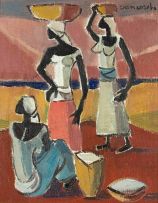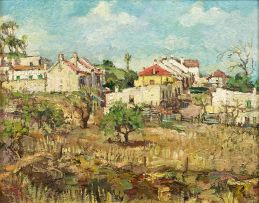South African Art, Jewellery and Decorative Arts
Live Auction, 4 February 2013
Paintings Evening Sale
Incl. Buyer's Premium & VAT
About this Item
signed and dated '98
Notes
Cape Kitchen Interior is a delightful painting extolling the charms of simple domestic life in the Cape during the late nineteenth century. Its subject and style are derived from Dutch seventeenth-century genre paintings via the noted painter Franz von Lenbach, under whom Naudé studied in Munich from 1890 to 1894 and whose style was influenced by Rembrandt.
The composition revolves around a centrally placed woman, who appears lost in thought as she peels pumpkin pieces. At her feet chicks strut in and out of a basket. A child standing at the table nearby is perhaps helping her while a baby sleeps contentedly in the early Cape cradle beneath the table.
A Chinese export eighteenth-century jar stands on the table and the Cape wall-hanging shelf displays blue and white china and a double gourd vase. A glass carafe stands beneath it and a typical brass chamber stick with its candle is placed before the window.
The implements of work are everywhere in evidence. A broom leans against the wall at the left alongside a large stoneware vessel. Through a darkened doorway, a woman attends to her pot on the fire. In front of her a man appears to be crushing mealies with a stampblock and pestle. Against the rhythms of work, one can almost hear the concertina music played by the old man at the left. His dog snoozes faithfully at his feet and even the cat sits contentedly on a chair unthreatened by the dog.
The warm, mellow tones enhance the atmosphere of quiet industry and well-being. On the Farm, a comparable painting in terms of period, size and handling, was selected by Adele Naudé for the cover of her monograph on the artist published by Struik in 1974. Such paintings provide valuable insights into the artist and his milieu.
Adele Naudé describes the artist as "one of the most humane and rounded beings I had ever been privileged to know".1 Naudé and his wife, Julie, were both dedicated to community service, were active in the Scouting movement and devoted much of their time to youth development. She was a trained nurse who worked amongst the local farm workers and after whom a children's crêche was named. Her workroom contained a Braille press on which she prepared books for the blind. This painting and the knowledge it elicits are poignant reminders of the inter-dependence of human beings across racial and class boundaries.
1. Adele Naudé, Hugo Naudé, C. Struik Publishers, 1974, page 8.
Provenance
Mr and Mrs High
Literature
Stephan Welz, Art at Auction in South Africa, AD Donker, Johannesburg, 1989, page 86, illustrated in colour
